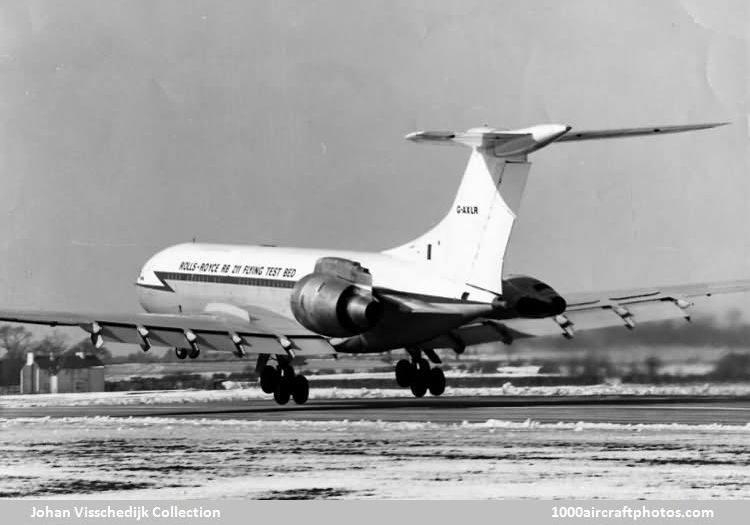10/31/2007. Remarks by Johan Visschedijk: "This was the fourth 1106 built for the RAF and first flew on July 28, 1966 and was delivered to RAF No. 10 Squadron on August 31, s/n XR809 and named "Hugh Malcolm VC". On September 17, 1969 it was leased by the Ministry of Defence to Rolls-Royce for conversion to a flying test bed of the RB.211 three-shaft turbofan engine that would eventually power the Lockheed L-1011 Tri-Star.
A single 40,600 lb (18,416 kg) st RB.211-22 replaced the two 21,000 lb (9,525 kg) st Rolls-Royce Conway Rco 42 by-pass turbojets on the left side. The first flight of this three-engined plane, registered G-AXLR, took place from the Rolls-Royce Flight and Test Establishment, Hucknall, near Nottingham, UK, on May 6, 1970. The test phase included 1,000 hr endurance test of typical Tri-Star operations; from May 1972 flights initiated from Filton.
On August 7, 1974 the aircraft was nearly lost, when flying early in the planned six-hour flight, at 240 knots (465 mph, 748kmh) at 20,000 ft (6,096m), the cold stream reverser of the RB.211 slid back into the reverse position following a planned re-light. This initiated a violent lurch, followed by aircraft buffet and adverse yaw and roll; level flight could not be maintained with full power on the two Conways. Decending at a high rate, fuel was dumped and at 1,000 ft (305 m) the aircraft weight had dropped to a value the Conways could cope with, and eventually a safe landing was made.
The aircraft returned to the RAF at Kemble on September 26, 1975 (the registration being cancelled on June 1, 1976), but due to airframe distortion it did not return to service. It was used by British Special Air Service (SAS) commandos for anti-hijacking training, thereafter laying derelict until scrapped on October 25, 1982."
